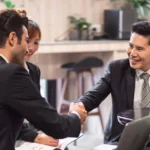In today’s rapidly evolving business landscape, workplace diversity has become a critical aspect of success. As an HR professional, your role in managing diversity is paramount to creating an inclusive and thriving organization. This guide will provide you with valuable insights and strategies to effectively navigate the challenges and maximize the benefits of workplace diversity.
I. Definition and Benefits of Workplace Diversity:
Workplace diversity encompasses differences in race, ethnicity, gender, age, sexual orientation, religion, disabilities, and more. Embracing diversity brings numerous advantages to organizations, including:
- Enhanced creativity and innovation: A diverse workforce brings together a variety of perspectives, experiences, and ideas, fostering a creative and innovative environment that drives growth and competitiveness.
- Improved problem-solving abilities: Diverse teams approach problem-solving from different angles, leading to more comprehensive and effective solutions.
- Increased employee engagement and productivity: Inclusive workplaces cultivate a sense of belonging and value among employees, leading to higher engagement levels and increased productivity.
- Expanded market reach and customer base: A diverse workforce enables organizations to better understand and connect with diverse customer segments, leading to improved customer satisfaction and increased market share.
II. Challenges in Managing Workplace Diversity:
While the benefits of diversity are substantial, managing diversity effectively can be challenging due to various factors. Some common challenges include:
A. Stereotypes and biases: Stereotypes and biases can hinder the fair assessment of individuals, leading to discrimination and exclusionary practices.
B. Communication and language barriers: Diverse teams may encounter difficulties in effective communication and understanding due to language differences or cultural nuances.
C. Inclusive hiring and promotion practices: Bias in recruitment and promotion processes can limit the representation of diverse talent within the organization.
D. Cultural differences and misunderstandings: Diverse workforces often consist of employees from different cultures, which can lead to misunderstandings and miscommunications if not addressed proactively.
E. Resistance to change: Some employees may resist diversity initiatives, fearing a loss of familiarity or perceived advantages.
III. Strategies for Managing Workplace Diversity:
To overcome these challenges and create an inclusive environment, HR professionals can implement the following strategies:
A. Creating an inclusive culture:
- Demonstrate leadership commitment to diversity and inclusion through visible support and advocacy.
- Develop diversity and inclusion policies that promote fairness, equity, and respect for all employees.
- Implement diversity awareness and training programs to educate employees about the importance of diversity and how to foster inclusivity.
B. Implementing diverse recruitment and hiring practices:
- Ensure diverse candidate pools by using multiple sourcing channels and outreach efforts.
- Implement unbiased selection processes that focus on skills, qualifications, and potential.
- Consider blind resume screening to eliminate unconscious biases during the initial candidate evaluation.
C. Fostering effective communication and collaboration:
- Encourage open dialogue and create safe spaces for employees to share their perspectives and concerns.
- Provide language and cultural training to bridge communication gaps and promote understanding.
- Establish employee resource groups to facilitate networking and support for underrepresented employees.
D. Building a supportive and inclusive workplace:
- Address discrimination and harassment promptly and provide mechanisms for reporting and resolving issues.
- Offer work-life balance initiatives and flexibility to accommodate diverse employee needs.
- Provide diverse role models and mentors to inspire and guide employees from underrepresented groups.
IV. Measuring and Evaluating Diversity Initiatives:
To gauge the effectiveness of diversity initiatives, HR professionals should:
A. Identify key metrics for tracking diversity and inclusion progress, such as representation at different levels, employee engagement scores, and retention rates.
B. Conduct regular employee surveys and feedback sessions to gain insights into employees’ experiences and perceptions regarding diversity and inclusion efforts.
C. Regularly report on diversity metrics and benchmark progress against industry standards and internal goals.
V. Addressing Common Diversity Management Pitfalls:
To ensure successful diversity management, HR professionals should be aware of and address common pitfalls, including:
A. Lack of leadership commitment: Without visible commitment from leaders, diversity initiatives may lack traction and support throughout the organization.
B. Inadequate diversity training and education: Insufficient training and education on diversity can perpetuate biases and hinder progress.
C. Failure to address unconscious biases: Unconscious biases can significantly impact decision-making processes, reinforcing inequality and hindering diversity efforts.
D. Ignoring employee feedback and concerns: Disregarding employee feedback and concerns can undermine trust and hinder progress towards an inclusive culture.
E. Inconsistent enforcement of policies: Inconsistent application of diversity policies can create perceptions of favoritism and erode confidence in the organization’s commitment to diversity.
Takeaway
Managing workplace diversity is both a challenge and an opportunity for HR professionals. By embracing diversity, organizations can unlock a multitude of benefits, including increased innovation, productivity, and market reach. With the strategies outlined in this guide, HR professionals can navigate challenges, foster an inclusive culture, and drive positive change in their organizations. Embrace diversity and lead the way toward a more inclusive future.










